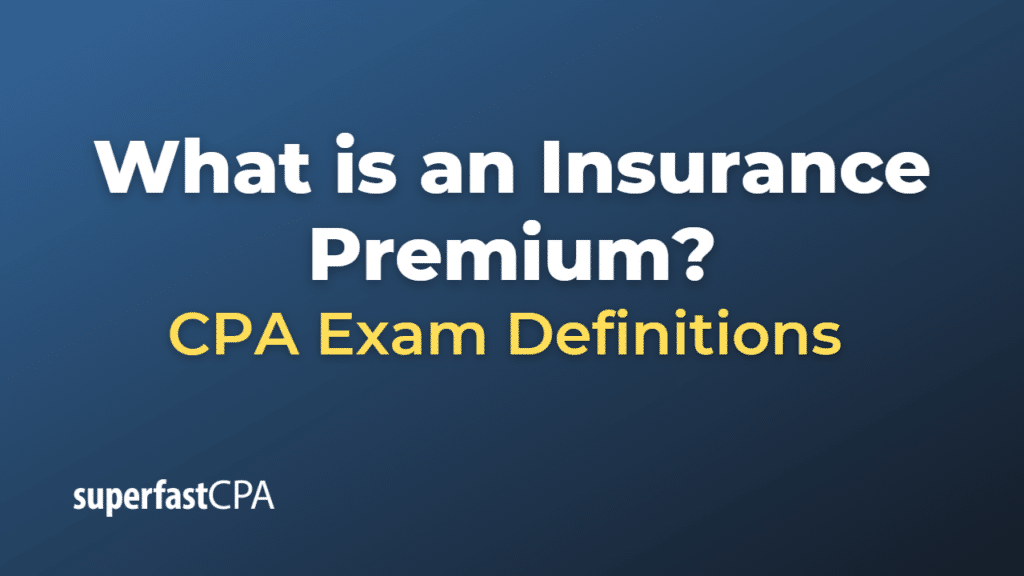Insurance Premium
An insurance premium is the amount of money an individual or a business pays to an insurance company in exchange for the insurance policy which provides coverage against potential loss or damage. Premiums are typically paid on a regular schedule, such as monthly, quarterly, semi-annually, or annually.
The amount of the insurance premium is determined by a number of factors, including:
- The Type of Coverage: Different types of insurance policies have different premiums. For instance, a comprehensive car insurance policy that covers theft, damage, and third-party liability will generally cost more than a policy that only covers third-party liability.
- Risk Assessment: The insurer assesses the risk associated with providing insurance coverage to the individual or business. For instance, for car insurance, factors such as the driver’s age, driving record, the car model, and even the area where the car will be driven most frequently, can all affect the premium.
- Policy Terms: The specific terms of the policy also impact the premium. Higher coverage limits and lower deductibles typically result in higher premiums, as they increase the potential amount the insurer may need to pay in the event of a claim.
The premium is one of the key costs to consider when purchasing insurance. It’s important to balance the need for affordable premiums with the need for adequate coverage. Shopping around and comparing quotes from multiple insurers can help ensure you find a policy that offers the best value for your needs.
Example of an Insurance Premium
Let’s consider an example involving car insurance.
Suppose Jenny is shopping for car insurance for her new car. She contacts several insurance companies to get quotes. One company provides her with the following options:
- Liability Coverage: This would cover damage Jenny causes to others if she’s at fault in an accident. It has a premium of $600 per year.
- Collision Coverage: This would cover damage to Jenny’s car from an accident, regardless of who’s at fault. It has a premium of $300 per year.
- Comprehensive Coverage: This would cover damage to Jenny’s car from events other than a collision, like theft, fire, or vandalism. It has a premium of $200 per year.
Jenny decides she wants all three types of coverage, so she adds up the premiums for each type of coverage: $600 (liability) + $300 (collision) + $200 (comprehensive) = $1,100 per year. This is the total annual premium she’ll pay for this car insurance policy.
It’s also worth noting that Jenny’s premiums could be higher or lower depending on various factors. For example, if she has a history of safe driving, she might be offered lower premiums. On the other hand, if she chooses a policy with a lower deductible, her premiums would likely be higher. The type and age of her car, where she lives, and how much she drives could also affect her premiums.
So, the premium is basically the cost Jenny has to pay to the insurance company for the coverage she is getting as per the insurance policy. If Jenny stops paying the premiums, the insurance company can cancel the coverage.













